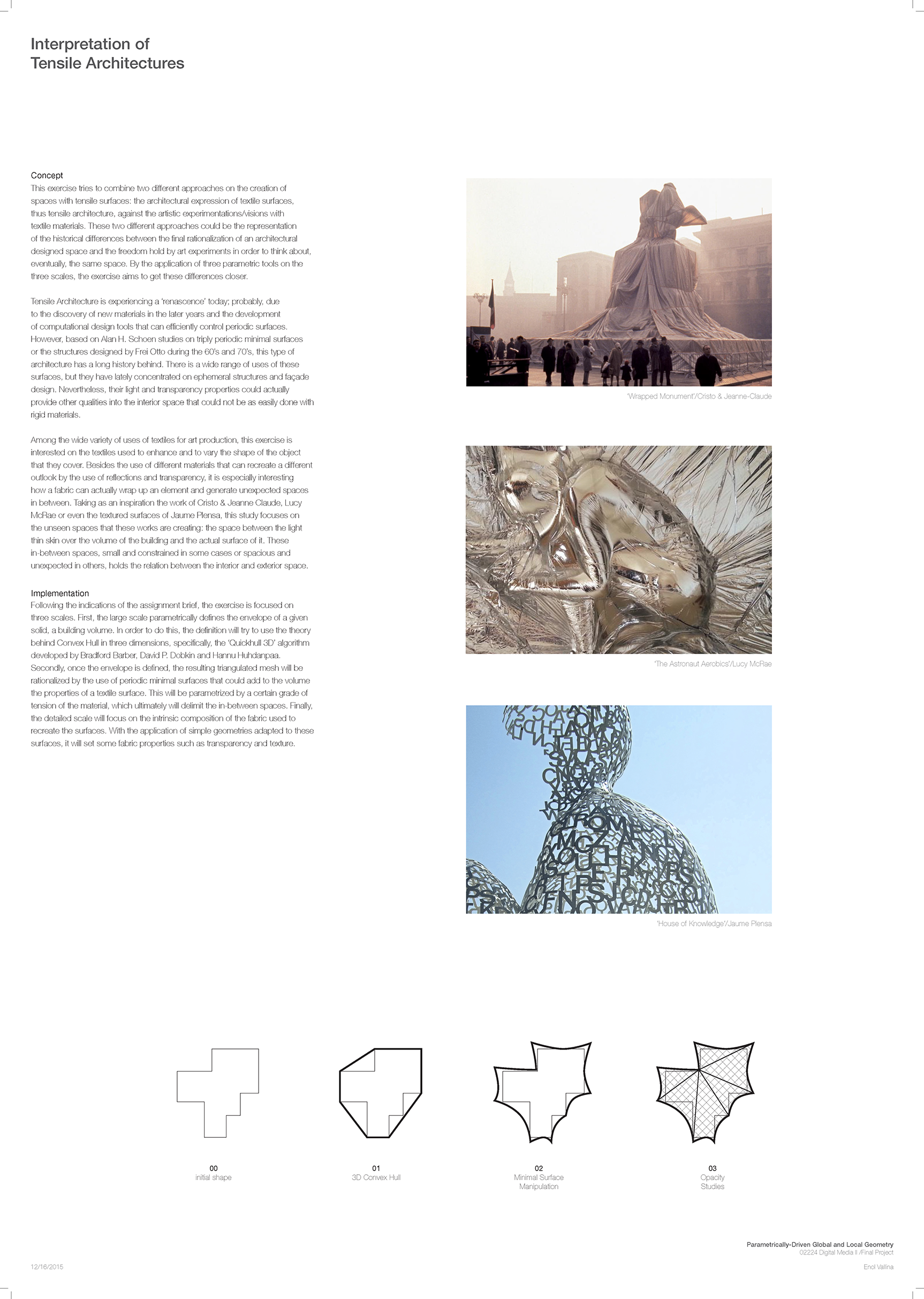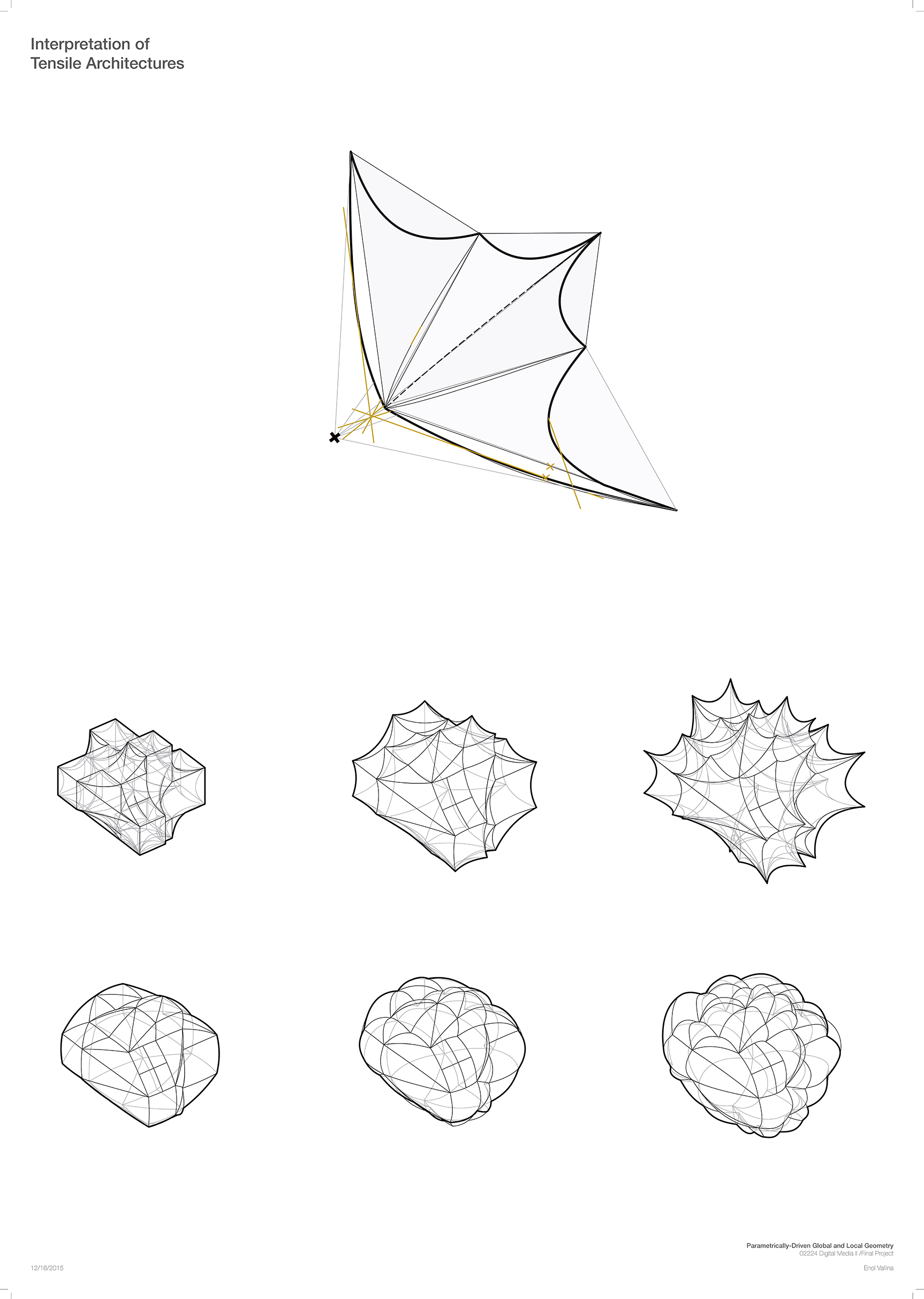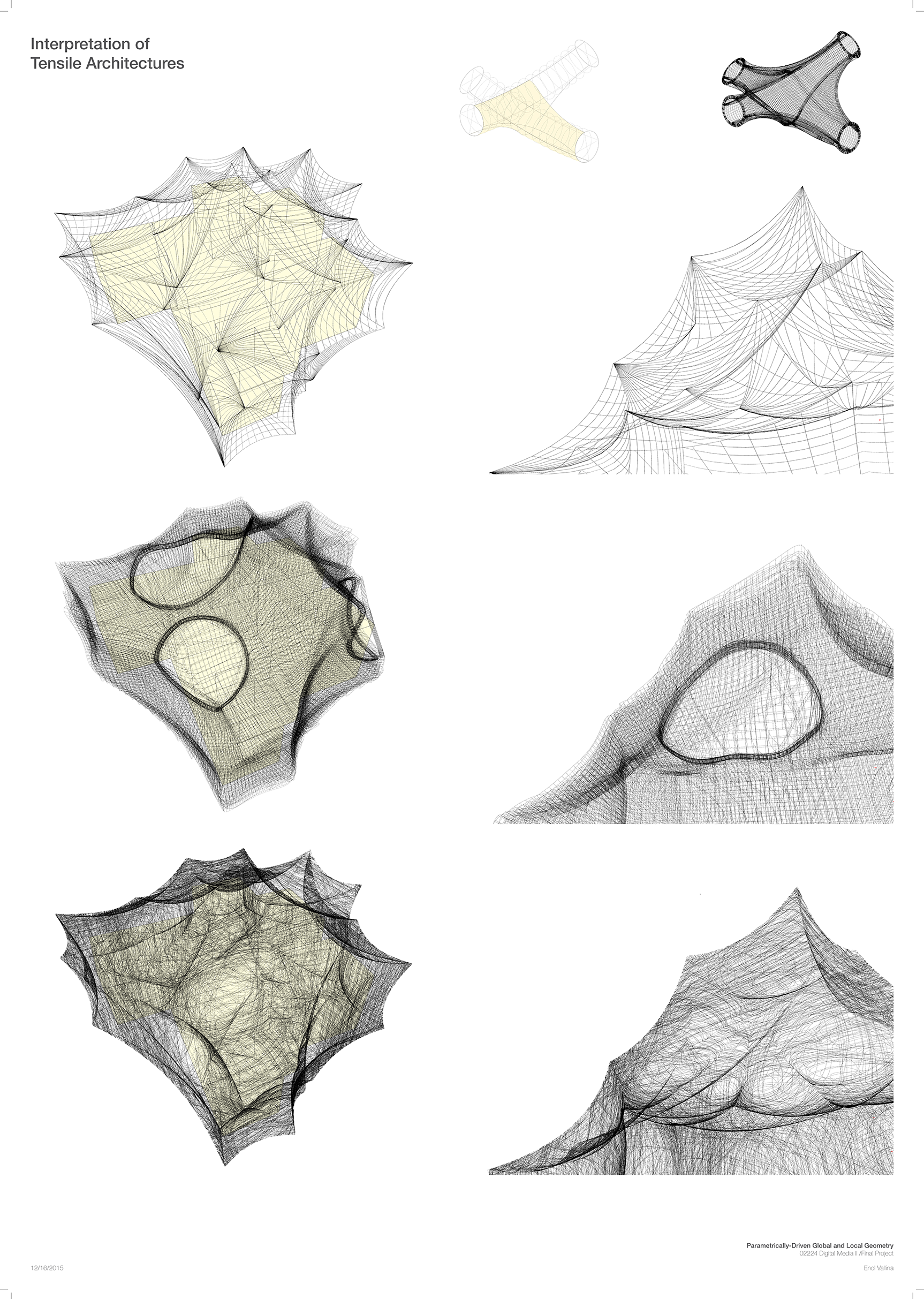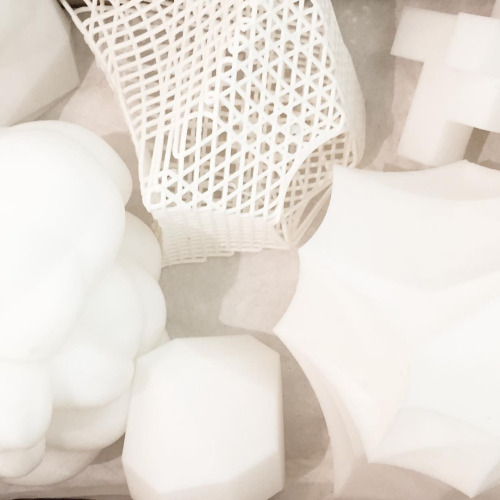Tensile Structure
Parametric Design Study
Concept
This exercise tries to combine two different approaches on the creation of spaces with tensile surfaces: the architectural expression of textile surfaces, thus tensile architecture, against the artistic experimentations/visions
with textile materials. These two different approaches could be the representation of the historical differences between the final rationalization of an architectural
designed space and the freedom hold by art experiments
in order to think about, eventually, the same space. By the application of three parametric tools on the three scales, the exercise aims to get these differences closer.
Tensile Architecture is experiencing a ‘renascence’ today; probably, due to the discovery of new materials in the later years and the development of computational design tools that can efficiently control
periodic surfaces. However, based on Alan H. Schoen studies on triply periodic minimal surfaces or the structures designed by Frei Otto during the 60’s and 70’s, this type of architecture has a long
history behind. There is a wide range of uses of these surfaces, but they have lately concentrated on ephemeral structures and façade design. Nevertheless, their light and transparency properties could actually provide
other qualities into the interior space that could not be as easily done with rigid materials.
Among the wide variety of uses of textiles for art production, this exercise is interested on the textiles used to enhance and to vary the shape of the object that they cover. Besides the use of different materials that
can recreate a different outlook by the use of reflections and transparency, it is especially interesting how a fabric can actually wrap up an element and generate unexpected spaces in between. Taking as an inspiration
the work of Cristo & Jeanne Claude, Lucy McRae or even the textured surfaces of Jaume Plensa, this study focuses on the unseen spaces that these works are creating: the space between the light thin skin over
the volume of the building and the actual surface of it. These in-between spaces, small and constrained in some cases or spacious and unexpected in others, holds the relation between the interior and exterior space.
Implementation
Following the indications of the assignment brief, the exercise is focused on three scales. First, the large scale parametrically defines the envelope of a given solid, a building volume.
In order to do this, the definition will try to use the theory behind Convex Hull in three dimensions, specifically, the ‘Quickhull 3D’ algorithm developed by Bradford Barber, David P. Dobkin and Hannu
Huhdanpaa. Secondly, once the envelope is defined, the resulting triangulated mesh will be rationalized by the use of periodic minimal surfaces that could add to the volume the properties of a textile surface.
This will be parametrized by a certain grade of tension of the material, which ultimately will delimit the in-between spaces. Finally, the detailed scale will focus on the intrinsic composition of the fabric used
to recreate the surfaces. With the application of simple geometries adapted to these surfaces, it will set some fabric properties such as transparency and texture.).
- Date: 2015
- Context: Harvard Graduate School of Design / 'Digital Media II' Course
- Category: Parametric Design



